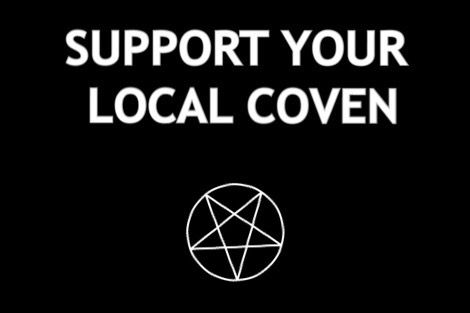Prove me wrong: witches are one of the most enduring feminist icons in popular culture. Just think of the The Wizard of Oz, AHS Coven, Hermione, even Marnie from Halloweentown, for crying out loud!
Even before the Salem Witch Trials in the 1600s, magic and witchcraft have made appearances throughout cultures around the world.
According to the History Channel, one of the earliest records of witchcraft appear in the Book of Samuel in the Bible, when King Saul reaches an unfortunate end after seeking help from the Witch of Endor.
As Christianity evolved, so did the attitude towards witches. Eventually, Puritain communities in New England were rocked by an onslaught of so-called witches.
Before the Bible, though, many non-Western cultures and religions actually worshipped divine women, goddesses, and even mortal women with healing powers. Only until the spread of Christianity did women begin to face persecution in the name of stopping the spread of Satanism and witchcraft. When Christianity was questioned, witchcraft followed.
In fact, historians have argued that the Salem Witch Trials were sparked by a black slave, Tituba, explaining the Pagan religion of her home country. Seen as a threat to the patriarchal, white supremacist norm of Puritain society in the 1600s, Tituba, and anyone else defying that norm, were accused of witchcraft, forced into unreasonable trials, and murdered. With this violent history, one would assume witches would remain taboo.
Today, witches have returned to the public imagination. Lana Del Ray and Stevie Nicks have both proudly identified as witches, sparking an onslaught of tweenage Tumblr girls to light their candles and start their gem collections in the name of “good vibes.” Sabrina the Teenage Witch (hot take: the 90s version is superior, sorry Riverdale stans) has made a recent comeback, and Hermione Granger is a role model to all bookworms everywhere.
So why are we so obsessed with witches now? At its core, the image of the witch, in every and all iterations through history and pop culture, is a woman with power.
In a culture where Ruth Bader Ginsburg and Nancy Pelosi are still called witches by right-leaning political pundits, and women and other marginalized genders are facing more threats to their autonomy than ever in recent memory, the thought of hexing The Man is empowering.
Women and femmes, especially adolescents, have begun to reclaim the label of witch to harness that power that had been seen as threatening to the social norm for so long.
But witches beware: this image of a witchcraft is further complicated when race, ethnicity, and religion are factored in.
While it can be fun and empowering to put on flowy bell sleeves and dance to Fleetwood Mac, the recent pop culture obsession with witches has led to a commercialization of vague Paganism at the expense of disenfranchised communities.
Indigenous communities are facing a shortage of white sage in recent years because of the appropriation of smudging and practicing Voodoo and other Pagan communities are still facing real persecution for the very practices and symbols that are being appropriated and commercialized by large corporations which are the antithesis of what witches throughout history have stood for.
But on that same note, witchcraft has always been about rebellion and communion. Do your research, commune with your fellow witches, and support each other.
Light that candle, put on some flowy clothes, and go cast a hex on The Man.



